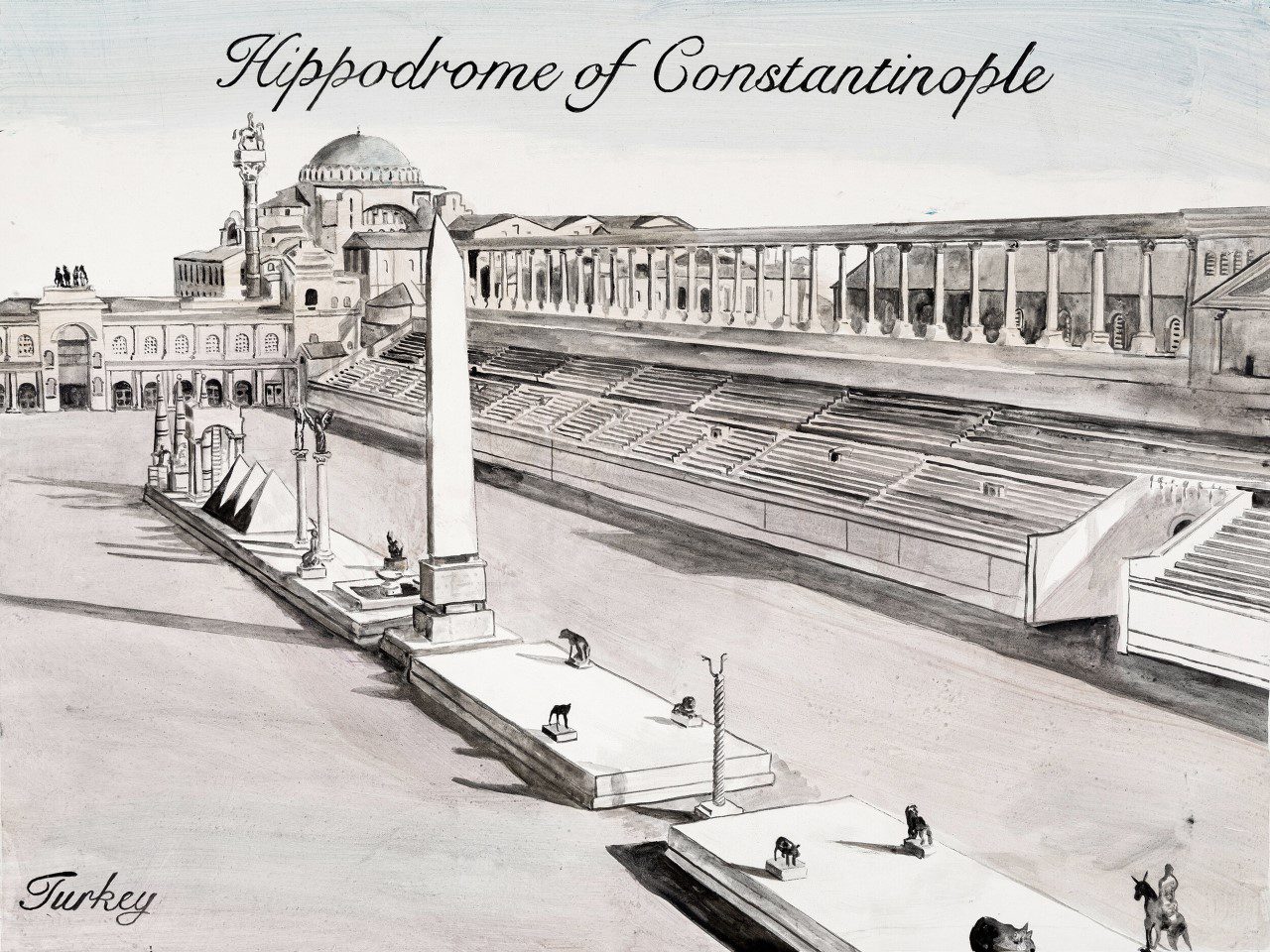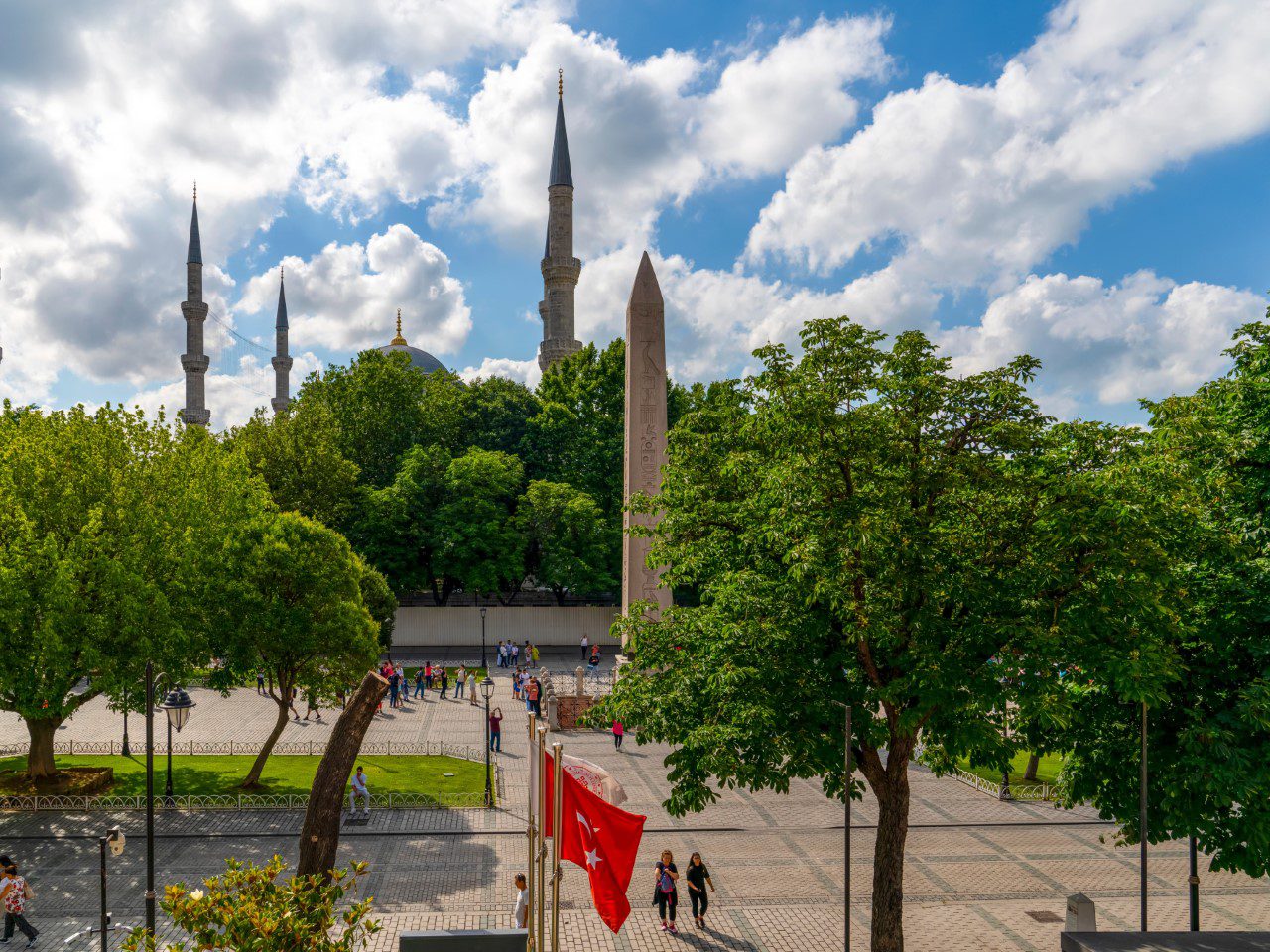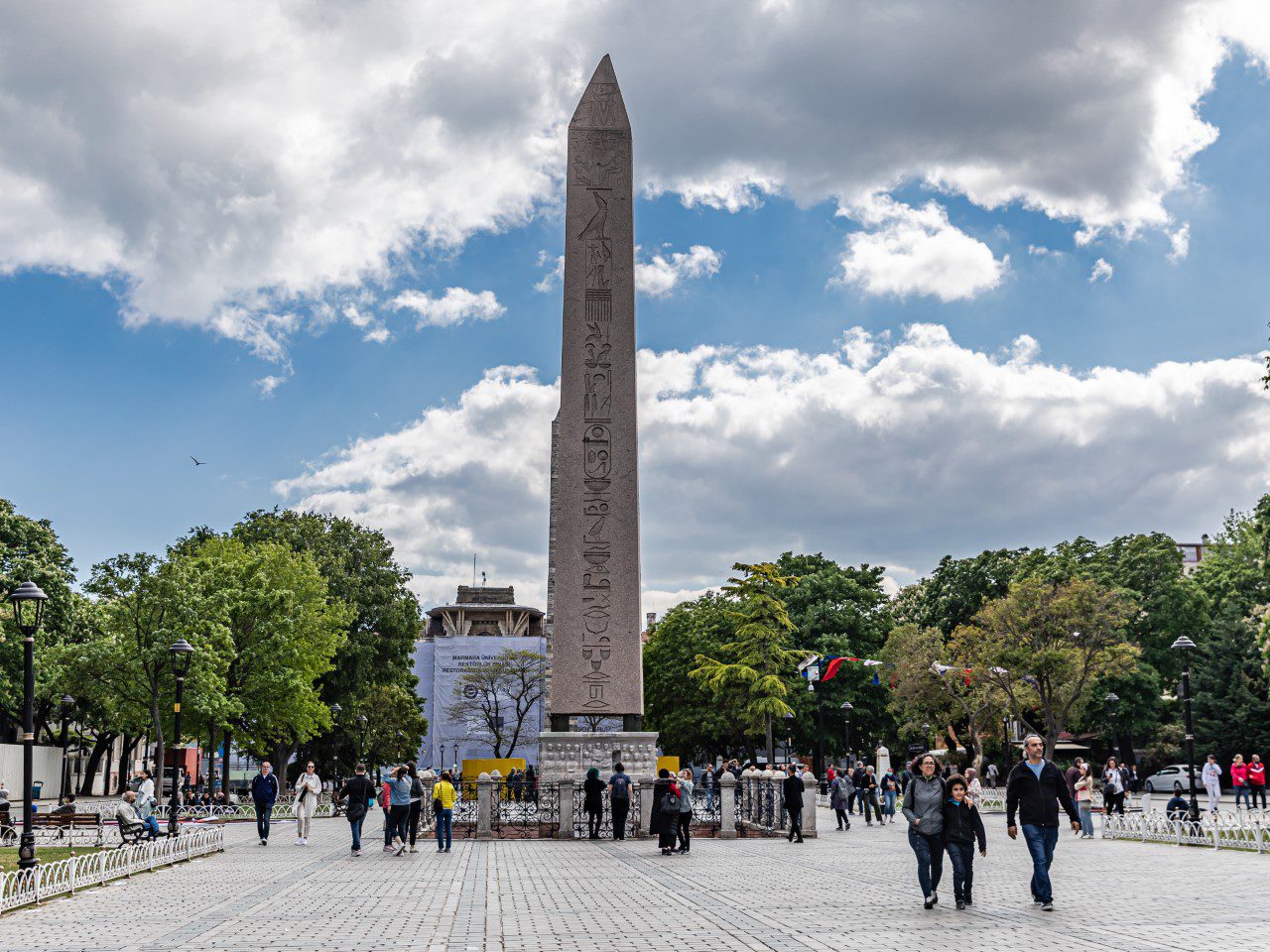The Hippodrome of Constantinople, also known as the At Meydanı (Horse Square) in Turkish, was an ancient chariot racing arena in Constantinople (present-day Istanbul). It was the Byzantine Empire’s vibrant and significant social, cultural, and political center. The Hippodrome played a crucial role in shaping the history and identity of Constantinople, leaving behind a rich legacy that continues to fascinate and inspire visitors to this day.
Historical Significance Hippodrome of Constantinople
The Hippodrome witnessed numerous historical events and hosted various activities throughout its existence. From chariot races to official ceremonies, celebrations to protests, and even torture and punishment of convicts, the Hippodrome was at the heart of Constantinople’s social fabric.
Exploring the Magnificence of the Hippodrome
The Hippodrome was a massive structure that could accommodate up to 100,000 spectators. It stood as a testament to the grandeur and luxury of the Byzantine Empire. The chariot races here symbolized prestige and power, attracting people from all walks of life. The Byzantines were passionate about their racing teams, known as the Blues and the Greens, and the rivalry between these factions often spilled over into the political and social realms.
The Hippodrome also served as a venue for various official ceremonies and imperial processions. Emperors, such as Constantine I and Justinian I, used the Hippodrome to display their splendor and reinforce their authority. The Nika Riots, a famous event in 532 AD, originated in the Hippodrome and profoundly impacted Byzantine history.


The Monuments and Landmarks within the Hippodrome
Several iconic monuments and landmarks once stood within the Hippodrome, enriching Constantinople’s historical and cultural tapestry. These structures have left an indelible mark on the city and are critical tourist attractions today. Let’s explore some of them:
The Obelisk of Theodosius
The Obelisk of Theodosius, originally from Egypt, was erected in the Hippodrome during the reign of Emperor Theodosius I. It stands as a symbol of the Byzantine Empire’s connection to the grandeur of ancient Egypt. It serves as a reminder of the empire’s influence on global trade and culture.
The Serpent Column
The Serpent Column, also known as the Delphi Tripod, was a bronze column adorned with intertwined serpents. It was initially part of a victory monument erected in ancient Delphi, Greece. Emperor Constantine, I relocated it to Constantinople to symbolize the city’s grandeur and power.
The Column of Constantine
The Column of Constantine, erected by Emperor Constantine I, was another notable monument within the Hippodrome. This column showcased the achievements and victories of Constantine I, the founder of Constantinople and the Byzantine Empire.
The German Fountain
The German Fountain, a gift from Kaiser Wilhelm II of Germany to Sultan Abdulhamid II, adorned the Hippodrome in the early 20th century. This ornate and intricate fountain served as a symbol of friendship between the Ottoman Empire and Germany.


Rediscovering the Hippodrome Today
Although the original Hippodrome no longer stands, its legacy is visible in the heart of modern Istanbul. Sultanahmet Square, once the site of
the Hippodrome, now serves as a central gathering place and a starting point for exploring the city’s historical treasures. Nearby, iconic landmarks like the Blue Mosque, Hagia Sophia, and the Istanbul Archaeological Museums continue to captivate visitors with their architectural grandeur and historical significance.


Conclusion Hippodrome Of Constantinople
The Hippodrome of Constantinople’s chariot races, historical events, and magnificent monuments remains integral to Istanbul’s rich heritage. It stood as a vibrant center of Byzantine life, witnessing the rise and fall of empires and shaping the identity of a city that straddles the crossroads of Europe and Asia. Exploring the remnants of this ancient arena and its surrounding landmarks allows us to step back in time and immerse ourselves in the captivating history of Constantinople.
Hippodrome of Constantinople FAQs:
What is the historical significance of the Hippodrome of Constantinople?
The Hippodrome of Constantinople was a vital social and cultural center, hosting chariot races, official ceremonies, and even protests. It played a crucial role in shaping the history and identity of Constantinople.
Which monuments can be found within the Hippodrome of Constantinople?
Some notable monuments within the Hippodrome were the Obelisk of Theodosius, the Serpent Column, the Column of Constantine, and the German Fountain.
Where is the Hippodrome of Constantinople located today?
The original Hippodrome no longer exists, but its site is now Sultanahmet Square in Istanbul, Turkey.
What are some famous events associated with the Hippodrome of Constantinople?
One of the most famous events linked to the Hippodrome is the Nika Riots in 532 AD, significantly impacting Byzantine history.
What landmarks are near the Hippodrome of Constantinople?
Near the site of the Hippodrome, visitors can explore iconic landmarks such as the Blue Mosque, Hagia Sophia, and the Istanbul Archaeological Museums.


0 Comment